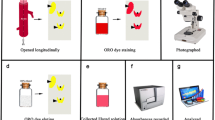Abstract
Our task is to summarize briefly the biochemical constituents of the vessel walls and how these change during the progression from normal intima to an atherosclerotic plaque. The intima is made up of a variety of cellular and noncellular components, including endothelial and occasional smooth muscle cells, glycosaminoglycans, collagen, and elastin ground substances. There is evidence that all of these intimai constituents undergo some changes during the progression from normal intima to atherosclerotic lesion. The major changes in mass and therefore volume during the progression to atherosclerotic lesions in man are in the lipid constituents of the vessel wall. In the normal vessel wall at different ages the total dry weight of the intima contains only a very few percent of its total mass as lipid (1); in the discrete small lesions called fatty streaks the lipid content of the intima in that lesion has increased to approximately 20% of the total mass. However, in carefully dissected, large, raised lesions described as atherosclerotic plaques, the percent dry weight is often greater than 50% (2). Since the density of the lipids is some 30–40% less than the density of the other constituents (proteins, polysaccharides), absolute volume occupied would be greater than the mass. Thus in human atherosclerotic lesions lipids account for a major fraction of the nonwater volume occupied by the lesion and therefore must be considered in the pathogenesis. The rest of this discussion will be directed mainly towards lipids, although other substances which increase in mass during the development of atherosclerotic lesions also include some cellular and connective tissue elements.
Access this chapter
Tax calculation will be finalised at checkout
Purchases are for personal use only
Preview
Unable to display preview. Download preview PDF.
Similar content being viewed by others
References
Smith EB, Evans PH, Downham MD (1967) The lipid in the aortic intima. The correlation of morphological and chemical characteristics. J Atheroscler Res 7: 171–186
Smith EB, Slater RS (1972) The microdissection of large atherosclerotic plaques to give morphologically and topographically defined fractions for analysis. Part 1. The lipids in the isolated fractions. Atherosclerosis 15: 37–56
Small DM, Shipley GG (1974) Physical-chemical basis of lipid deposition in atherosclerosis. Science 185: 222–229
Small DM (1977) Liquid crystals in living and dying systems. J Colloid Interface Sci 58: 581–602
Katz SS, Small DM, Shipley GG (1976) Physical chemistry of the lipids of human atherosclerotic lesions. Demonstration of a lesion intermediate between fatty streaks and advanced plaques. J Clin Invest 58: 200–211
Small DM (1970) The physical state of lipids of biological importance-cholesterol esters, cholesterol and triglyceride. In: Blank M (ed) Surface chemistry of biological systems. Plenum Press, New York, pp 55–83
Atkinson D, Deckelbaum RJ, Small DM, Shipley GG (1977) The structure of human plasma low-density lipoproteins. The molecular organization of the central core. Proc Natl Acad Sci USA 74: 1042–1046
Loomis CR, Shipley GG, Small DM (1979) The phase behavior of hydrated cholesterol. J Lipid Res 20: 525–535
Craven BM (1976) Crystal structure of cholesterol mono-hydrate. Nature 160: 727–729
Katz SS (1981) The lipids of grossly normal human aortic intima from birth to old age. J Biol Chem 256: 12275–12280
Brown MS, Goldstein JL (1976) Receptor-mediated control of cholesterol metabolism. Science 191: 150–154
Fredrickson DS, Brown MS, Goldstein JL (1978) The familial hyperlipoproteinemias. In: Stanbury JB, Wyngaarden JB, Fredrickson DS (eds) The metabolic basis of inherited disease. McGraw-Hill, New York, pp 604–655
Small DM (1977) Cellular mechanisms for lipid deposition in atherosclerosis. N Engl J Med (Seminars in Physiology) 297:873–877, 924–929
Small DM (1980) Summary of concepts concerning the arterial wall and its atherosclerotic lesions. In: Gotto AM Jr, Smith LC, Allen B (eds) Atherosclerosis V. Springer-Verlag, New York, pp 520–524
Hoff HF, Heideman CL, Gaubatz JW (1980) Low-density lipoproteins in the aorta: In: Gotto AM Jr, Smith LC, Allen B (eds) Atherosclerosis V. Springer-Verlag, New York, pp 533–536
Hollander W, Paddock J, Colombo M (1979) Lipoproteins in human atherosclerotic vessels. Exp Mol Pathol 30: 144–171
Humason GL (1979) Staining lipids and carbohydrates. In: Animal Tissue Techniques. WH Freeman and Company, San Francisco, pp 284–293
Clair RW (1976) Cholesterol ester metabolism in atherosclerotic arterial tissue. Ann NY Acad Sci 275: 228–237
Bayliss-High OB, Adams CWM (1980) The role of macrophages and giant cells in advanced human atherosclerosis. Atherosclerosis 36: 441–447
Editor information
Editors and Affiliations
Rights and permissions
Copyright information
© 1983 Springer-Verlag New York Inc.
About this chapter
Cite this chapter
Waugh, D.A., Small, D.M., St. Clair, R.W. (1983). Physical Biochemistry of the Lesions of Man, Subhuman Primates, and Rabbits. In: Bond, M.G., Insull, W., Glagov, S., Chandler, A.B., Cornhill, J.F. (eds) Clinical Diagnosis of Atherosclerosis. Springer, New York, NY. https://doi.org/10.1007/978-1-4684-6277-7_5
Download citation
DOI: https://doi.org/10.1007/978-1-4684-6277-7_5
Publisher Name: Springer, New York, NY
Print ISBN: 978-1-4684-6279-1
Online ISBN: 978-1-4684-6277-7
eBook Packages: Springer Book Archive




